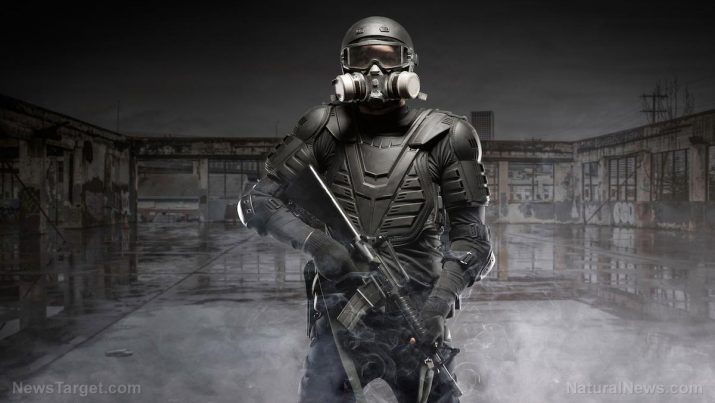Understanding body armor ratings and protection levels
Monday, August 20, 2018 by Edsel Cook
http://www.bugout.news/2018-08-20-understanding-body-armor-ratings-and-protection-levels.html

Thinking of getting yourself a set of body armor to prepare for trouble of the worst kind? An article on The Survivalist Blog showed how to interpret the official rating and protection levels for armor.
The National Institute of Justice (NIJ) set up the 0101.96 armor protection ratings in the 1970s. These ratings are used to this day and have not been changed over the decades.
- Level IIA – Stops 9 mm FMJ (124 g bullet at 1225 feet per second [fps]) and .40 S&W FMJ (180 g at 1155 fps) fired from handguns.
- Level II – Stops 9 mm FMJ (124 g at 1305 fps) and .357 Magnum JSP (158 g at 1430 fps) fired from handguns.
- Level IIIA – Stops .357 SIG FMJ (125 g at 1470 fps) and .44 Magnum SJHP (240 g round at 1430 fps) fired from handguns.
- Level III – Hard armor or plate inserts that will stop M80 7.62×51 mm NATO (147 g at 2780 fps).
- Level IV – Hard armor or plate inserts that will stop M2 AP .30-06 (166 g at 2880 fps).
In coming up with their ratings and protection levels, the NIJ skimped on certain rifle rounds. The 5.56×45 mm, 5.45×39 mm, 7.62×39 mm or 7.62×54 mm rounds are not covered despite being very common. (Related: Gun Control is People Control.)
The different types of materials in body armor plates
Armor is made out of many different materials, often times combined together to improve their toughness. Hard armor that can resist rifle rounds are made of either steel, ceramics, or “poly” materials.
Steel armor plates are the cheapest. They also weigh the heaviest and are not very good at resisting high-velocity bullets such as 5.56 mm and 5.45 mm.
While they can take multiple hits without getting holed, impacts will cause steel plates to fragment and spall. The resulting shrapnel is almost as deadly as getting hit by the actual bullet.
Ceramics occupy a comfortable middle ground when it comes to cost and weight. They are much more effective than steel when it comes to stopping armor-piercing and high-velocity bullets.
However, ceramic plates are easily damaged by careless or rough handling out of combat. When that happens, their protection gets reduced. They therefore need extra care.
Finally, there is poly, which is short for Ultra-High Molecular Weight Polyethylene. It costs an arm and a leg, and it is very vulnerable to armor-piercing rounds, even more so than steel.
However, pure poly is also the lightest armor material. It can also be combined with other materials to form heavier, more expensive, and more durable armor.
Of the three, ceramics come closest to being the all-around option.
Picking the right body armor for your needs
The NIJ armor levels and protection ratings are very narrow with their requirements. This is not good for making informed choices.
A Level IV armor plate is required to withstand a single M2 AP.30-06 round. However, the rating says nothing about stopping multiple shots of the same caliber. Nor does it say anything about resisting other types of rounds.
You will have to verify with the manufacturer of your intended armor if it will indeed stop the threat you expect to face. Then you have to double-check their claims.
Check if the armor is truly standalone or if it needs to be used in conjunction with another set. Also be careful about armor that adds a plus sign to the armor level number as the designation is not standard.
Don’t let yourself be swayed by marketing ploys like “stops anything up to a 7.62 mm NATO.” Thoroughly vet your purchase using a trusted third-party expert.
When you do pick an armor package, you also need to pick the right carrier to wear it. Get a carrier that fits your torso, accommodates the right armor plates, and maximizes protection of your vital organs.
Learn more about guns and body armor at Guns.news.
Sources include
NIJ.gov [PDF]
Tagged Under: Tags: body armor, bulletproof armor, Bullets, firearms, guns, preparedness, prepper, prepping, protection, protective armor, rifles, survival, Survival Tips, survivalist

